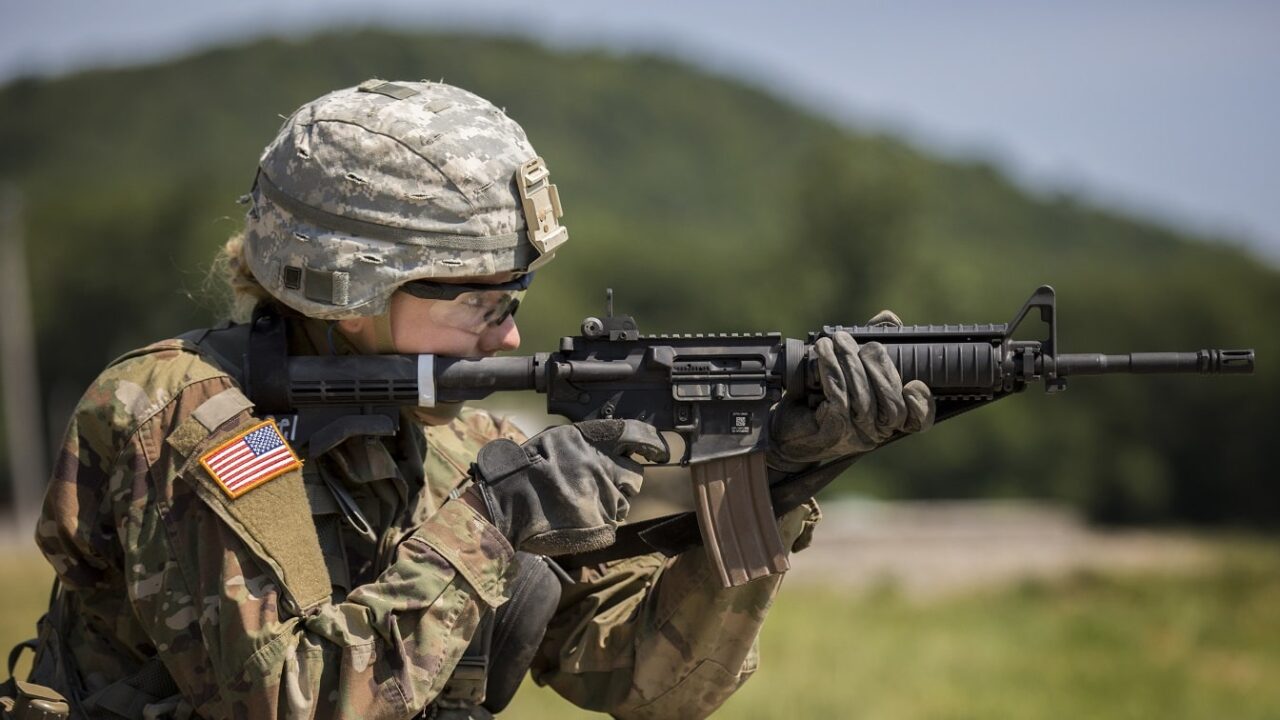The M4 Carbine Isn’t Sharpshooting Weapon – The M4 carbine has seen it all since 9/11. Iraq, Afghanistan, Syria, Africa – that’s just to name a few battlefields where this carbine excelled. The M4 is based on the CAR-15 that was used by special operations forces and long-range reconnaissance patrols in Vietnam. Clearly, the carbine has been utilized by the U.S. military for decades. But an infantry platoon needs more than the shorter-range M4 to be effective, something I know first hand having served in the US Army. With that said, let’s take a look at sharpshooting weapons that can augment the M4.
Why the M4 Got Popular
U.S. special ops started leaning toward the 5.56mm M4 in the 1990s because of close-quarter urban combat. A shorter and lighter weapon was needed to clear rooms. The M4’s 14.5-inch barrel is easier to handle than the M-16’s 20-inch barrel. Also, the M4 made it a lot simpler to parachute from airplanes and be dropped off by helicopter. The SEALs liked the compact size when infiltrating during waterborne operations.
Lots of Optics
The M4’s rail system gives a myriad of optics accessories, including holographic sights, red dot reflex sights, and thermal scopes.
The M4 Wasn’t For Everyone
After entering the Army in the late 1990s and learning to shoot on the M-16A2 and M-16A3, I quickly grew confident firing the longer weapon. It wasn’t until 2001 when serving with a light infantry air assault unit that I fired the M4. I didn’t like it at first. I have longer arms, and the M4 has a different muzzle velocity. This was going to take some getting used to. It just didn’t feel comfortable at first.
Let’s Get a Long-range Shooter in Each Rifle Platoon
As Iraq and Afghanistan progressed and more units switched over to the M4, I began telling my friends that since the M4 had a shorter range, and everybody in the platoon had one, what would be used to engage longer targets by the basic rifleman? I thought that there should still be at least one longer-range M-16 in every platoon handled by the best shot in the unit because the enemy was probably going to keep its distance knowing the M4 had a shorter range.
Fast forward to 2021, and it appears the U.S. Marine Corps is thinking the same thing. They have re-organized the rifle squad with new weapons.
New Infantry Automatic Rifle
The M27 infantry automatic rifle (IAR) was originally supposed to take the place of the M249 SAW, but the marines approved it for the squad, and it will eventually replace the M4. The M27 IAR has improved sights for longer range. The suppressor will keep the muzzle flash down and make it quieter and more difficult for the enemy to see. The effective range is about 600 yards – longer than the M4.
Squad Designated Marksman Will Have a New Rifle
The best marine shooter in each squad will become the squad-designated marksman and receive the M38 rifle. This is for long-range, although it’s not a true sniper rifle. It’s similar to the M27, but it has an improved Leupold sight with better magnification. The M38 comes with a bipod for enhanced stability. This will give the marksman a range of 600 yards.
I’m glad the marines are making these changes. It’s always good to have a longer-range shooter in the squad. Although the Middle East and South Asia have mostly wrapped up for the U.S. military, there will be battlefields in the future that require more heft than the M4, even though it is still a popular weapon.
Now serving as 1945’s Defense and National Security Editor, Brent M. Eastwood, PhD, is the author of Humans, Machines, and Data: Future Trends in Warfare. He is an Emerging Threats expert and former U.S. Army Infantry officer.

